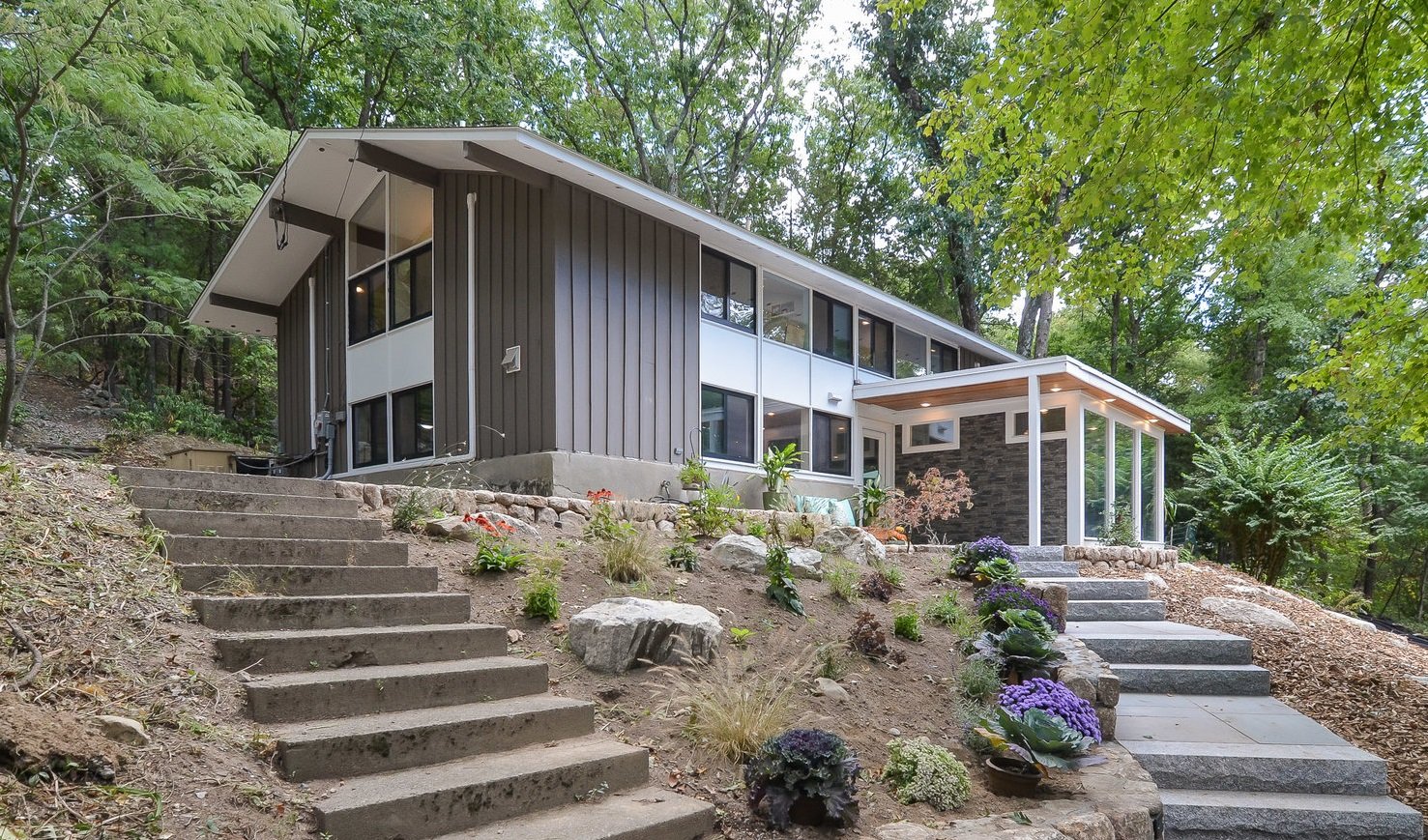#8536. Forest Modernism: Vertical Facade with Panoramic Glazing
This forest house represents an excellent example of mid-century modernist architecture harmoniously integrated into the natural landscape. The building's facade is characterized by clean lines and an asymmetrical shed roof, which is a classic element of modernist design.
The main facade material consists of vertical dark gray panels that contrast with horizontal white elements and extensive glazing. This play with material orientation creates a visual rhythm and adds dynamism to the building's exterior appearance. Particularly noteworthy is the upper part of the facade, where the line of windows under the roof allows abundant natural light to enter the interior.
The right section of the house features integration of natural stone and wooden elements, which softens the overall strictness of the modernist aesthetic. The canopy with a wooden ceiling forms a protected open terrace, continuing the idea of merging interior and exterior spaces.
The landscaping deserves special attention: concrete stairs framed by rocks and plants create a gradual transition from wild nature to living space. Purple accents of flowering plants enliven the earthy palette of the site.
When designing your own facade in a similar style, it's worth paying attention to the contrasting combination of materials (metal/wood/stone), playing with horizontal and vertical lines, as well as functional glazing that not only allows light in but also visually connects the house with its surroundings. The balance between geometric rigor and natural elements creates a cozy yet modern image of a country house.
